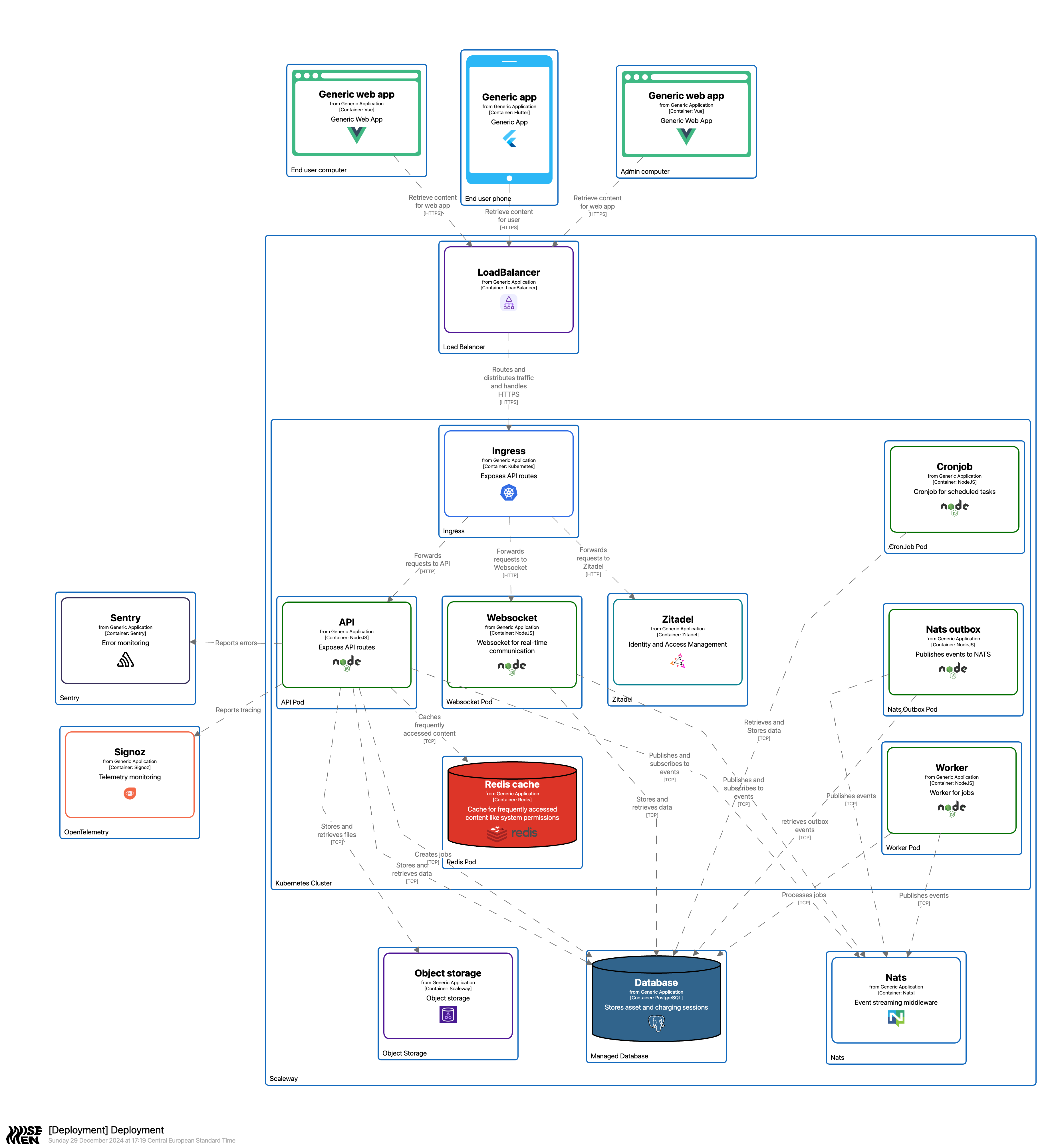Appearance
System Architecture Overview
The following diagram illustrates our system architecture, which is designed to be modular, scalable, and secure. Below is an explanation of its key components and their roles within the system.

Core Features
Microservices-Based Architecture The system is built on Kubernetes to manage and scale microservices efficiently. Each service operates independently, enabling flexibility and maintainability.
Real-Time Communication A WebSocket service provides real-time updates, ensuring low latency and live interaction capabilities.
Event-Driven Design NATS acts as our event streaming middleware, enabling services to communicate asynchronously via a publish-subscribe pattern.
Identity and Access Management User authentication and access control are managed by Zitadel, integrated with Azure AD for enterprise-grade security.
Monitoring and Observability
- Sentry: Monitors errors and provides actionable insights for debugging.
- Signoz: Tracks telemetry data to help identify and resolve performance bottlenecks.
Data Management
Database: A PostgreSQL database serves as the primary storage for application data such as assets and session information.
Caching Layer: Redis is employed to cache frequently accessed data, reducing the load on the database and speeding up responses.
Object Storage: Scaleway's object storage is used for handling large files, ensuring cost-effective and scalable file management. This follows the S3 Standard.
Communication and Traffic Management
Load Balancer and Ingress: These components route and distribute traffic across services, handling HTTPS and ensuring redundancy.
API Gateway: The API pods acts as the main entry point for communication, exposing RESTful routes to clients.
Background Jobs and Scheduled Jobs
Worker Pods: Background jobs and intensive tasks are processed asynchronously using dedicated worker pods. Services like the API service can offload tasks to these workers to maintain responsiveness. This prevents blocking API resources and ensures a smooth user experience.
CronJobs: Periodic tasks are handled by CronJobs to ensure scheduled operations run seamlessly. Even though we try to avoid them, some tasks are best suited for periodic execution. These jobs are managed by the Kubernetes scheduler.
Frontend and Client Services
Client Applications:
- Web Application: Built with Vue.js to deliver a robust experience to end users and administrators.
- Mobile Application: Developed in Flutter to provide a responsive and seamless mobile experience.
Interaction with Backend: Both clients communicate with the backend via HTTPS, routed through the load balancer and ingress layer.
Deployment Setup
Kubernetes Cluster: All services are containerized and orchestrated in a Kubernetes cluster to optimize resource utilization and ensure high availability.
Infrastructure: Hosted on Scaleway, the system benefits from reliable object storage, managed databases, and scalable networking components.
Key Benefits
Scalability: The system is designed to scale horizontally, with Kubernetes managing service replication and load balancing.
Resilience: Decoupled services and robust monitoring tools ensure fault tolerance and quick recovery.
Performance: Real-time communication, caching, and asynchronous processing enhance system responsiveness.
This architecture is ideal for delivering a secure, high-performance, and user-friendly application for both web and mobile platforms.
